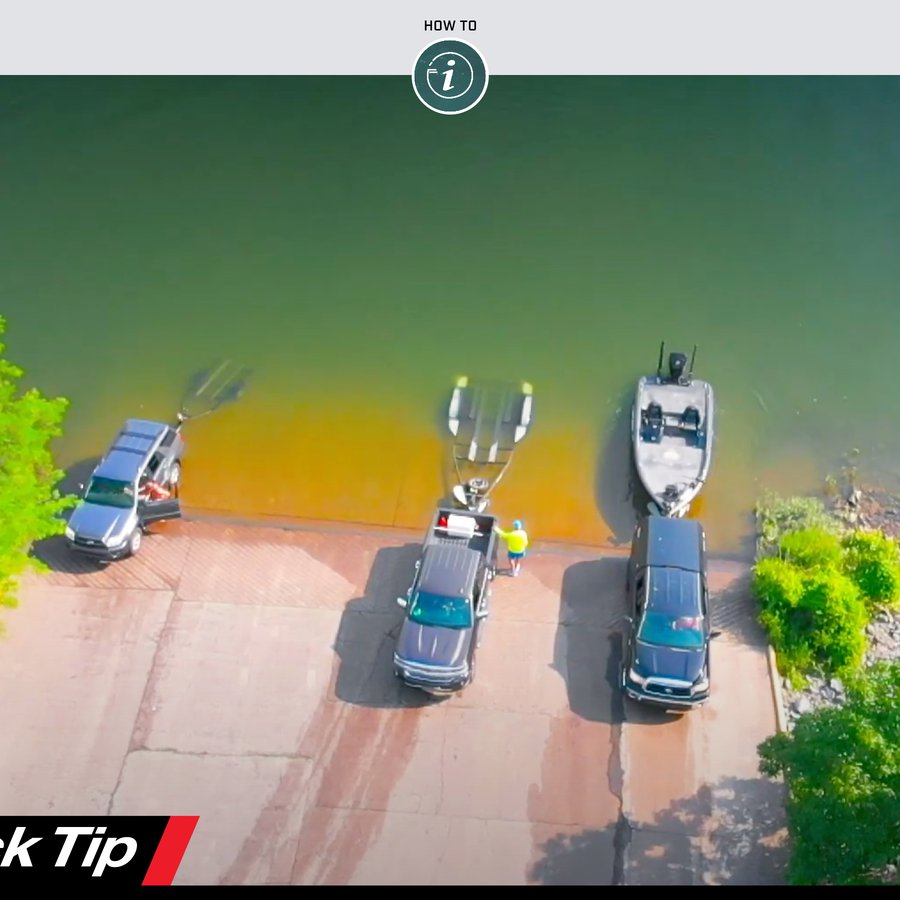In a perfect world, every lake is full of biting fish and hosts a nicely pitched boat ramp with nobody waiting in line. But we all know perfect is just a fantasy. With more boats on the water and an increasing knowledge base among anglers, lakes are often crowded and the fish less than willing. Now, more than ever, you need a secret honey hole.
Sometimes, there’s plenty of great water, but no easy way to get on it, as remote lakes and rivers often lack quality boat ramps. In places like Florida, crude boat ramps are a daily part of business. No one could ever keep up with all the small pits and ponds, many offering just a sandy spot to launch. Local anglers employ an array of specialized equipment for just such a purpose, from tilt trailers to airboats.
You don’t need to go that far. With a little knowledge and a few tips, you can get on some remote waters with your current rig.
First, it’s crucial to assess your setup, and be honest. No, it won’t be possible to launch a 4,000-pound bass boat on a golf course pond. Ask yourself: Can you manually move your boat by hand, on and off the trailer? Can you crank it up with the winch, provided the bunks get wet? Remember, it’s easier to launch a boat than load it. Always consider the end game.
There are some upgrades that can help with the process. First and foremost, a quality winch is paramount to loading a boat on poor ramps. Often, considerable cranking must be done to bring the boat up on the bunks, and it’s quite possible to wear out a winch. For that reason, upgrade your winch if it’s not in great shape. Choose a model with the biggest gears possible, keep it greased and don’t forget to check the winch strap. This is the part that wears fastest on most trailers, especially if left exposed to the sun. Winch straps break down easily from UV rays, often leaving you stranded, so plan ahead.
Roller trailers are great for launching at crude ramps. If you have bunks, consider upgrading by adding glide-on pads or material. These synthetics allow light boats to slide on and off a trailer with almost no effort – just remember that point when launching, and don’t unhook your boat until it’s over the water. If you don’t have this space-age coating, fully wet your carpeted bunks before attempting to load the boat. There are spray lubricants that can help even more, too.
Next, assess your trailer tires. Big tires don’t get stuck and are easy to roll through the ruts common on dirt ramps. Upgrading to larger wheels may be costly but will get you farther off the map. Fifteen-inch wheels are a good starter.
Launching your rig is rarely the problem and needs little explanation. However, before you take the plunge, really assess the ramp. If you can grab a walking stick, wade in and poke around, even better. Nearly all lousy launch locations have areas with massive deep blowholes, surrounded by flat terrain. It’s best to find these holes ahead of time. Otherwise, it’s very possible to back one wheel of your trailer into the abyss while leaving the other in ankle-deep water. That makes for a very unexpected, unsafe launch.
Once you’ve found fairly level ground and backed the boat in, push the boat off the trailer, if possible. This will help you avoid backing your trailer over any sudden drops.
With the boat launched, now is a good time to assess the situation and consider your end game. How does the trailer look now that the boat is off it? Is it fairly level? Assess the height of each fender and take mental note of where the truck and trailer are located on the ramp. Most of these backwoods ramps have unsafe areas, and they can require some back-and-forth positioning with the truck to find a good flat spot. Once you’ve located it, don’t lose it, especially if you plan to return at day’s end.
There’s also some equipment that can help you out of a jam. First, always carry a shovel, preferably a pointed spade model. You can use it to move dirt out or under your wheels if things get dicey. A few large wooden planks can also come in handy. If possible, go big, like sizable lengths of 2-by-10. In a worst-case scenario, the planks can be used to bridge large holes and get out of a bad situation.
A bag or two of pea gravel or rocks can save the day. Pick up a few at the garden section of the big box store, and leave them in the back of your tow vehicle. These add tremendous traction in a desperate situation.
And always have a tow strap. While it’s best to not get stuck, it’s nice to have a way out if you need to call for help. Finally, don’t even attempt these rougher ramps in anything but a four-wheel-drive vehicle. Most often, anglers get stuck on the ramp because their front tires won’t pull them up. But it’s very hard to stick a sizable pickup in four-wheel drive.
There are no shortcuts in getting off the grid. Preparation and a conservative approach are the keys. Upgrade and maintain your trailer first, then thoroughly assess your situation before launching. And always bring a buddy. They can help with the digging, winching and pushing should things go south.
Once you’re confident launching the boat on out-of-the-way ramps, you may have access to a new favorite fishing spot that only you and your buddy know about.



















